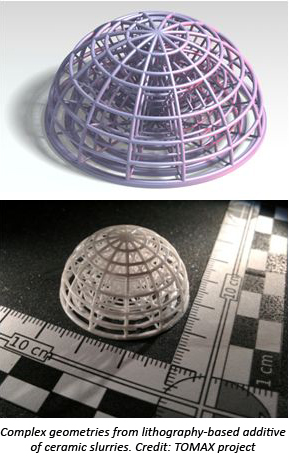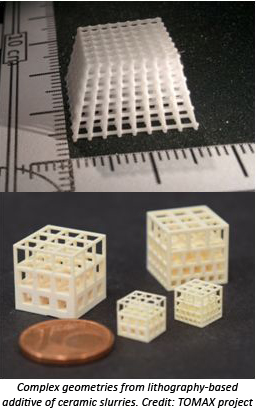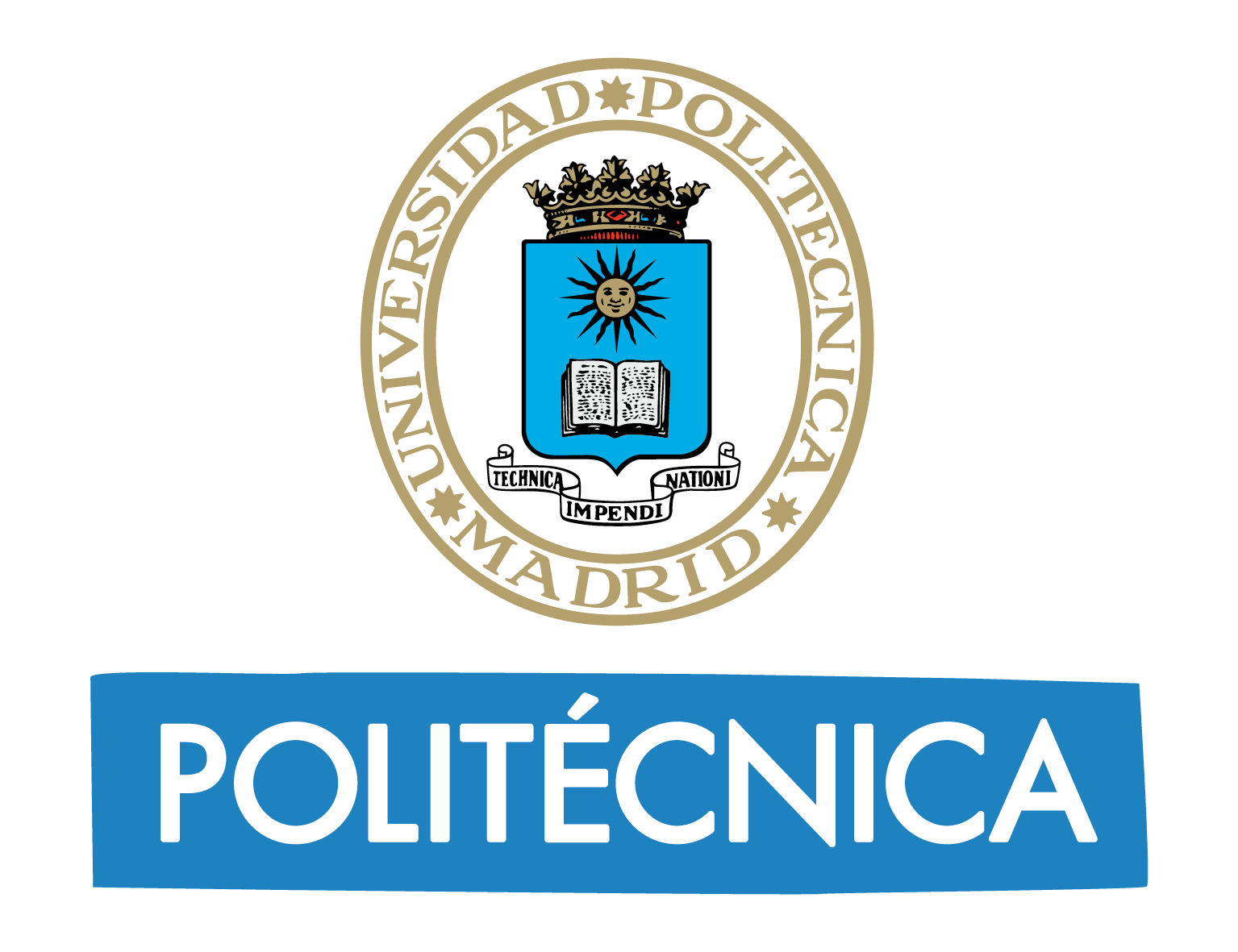Progress in the development of more competitive, efficient and sustainable additive manufacturing technologies
Researchers from Universidad Politécnica de Madrid (UPM) have implemented new design strategies for additive manufacturing and have been validated through the full development of diverse applications in industrial sectors such as tissue engineering and competition cars.
A team of researchers from the School of Industrial Engineering at UPM was involved in the European project TOMAX (Toolless manufacturing of complex structures), focused on the improvement of additive manufacturing technologies such as the lithography-based ceramic manufacturing of high geometric complexity.
UPM researchers have contributed to the success of the project by implementing and integrating different design strategies to these 3D printing technologies by additive photopolymerization that will improve the weight and mechanical strength of the manufactured components, control the properties and superficial textures of the resulting elements, assess the influence of the manufacturing process and add functionalities in final usages linked to sectors of energy, transport and health.
 Additive manufacturing technologies based on polymerization of resin and ceramic slurries (polymer-based pastes containing high levels of ceramic particles) are today the industrial printing 3D technologies that provide better synergy between the manufacturing precision and the piece size, besides they enable a high productivity and high performance of manufacturing both polymers and ceramics. The goal of the partners involved in the European project TOMAX (Horizon 2020, Factories of the Future) was to enhance these technologies.
Additive manufacturing technologies based on polymerization of resin and ceramic slurries (polymer-based pastes containing high levels of ceramic particles) are today the industrial printing 3D technologies that provide better synergy between the manufacturing precision and the piece size, besides they enable a high productivity and high performance of manufacturing both polymers and ceramics. The goal of the partners involved in the European project TOMAX (Horizon 2020, Factories of the Future) was to enhance these technologies.
In order to achieve this goal, researchers studied diverse aspects: improvements in the specific software for these processes, the development and integration of computational modeling techniques to optimize the geometry and processes, the integration of lighting systems and high precision positioning and, finally, the development of new photopolymers and advanced ceramics.
Andrés Díaz Lantada, a UPM researcher involved in this project said, “it is needed to invest efforts in the development of new designs oriented to additive processes to boost the industrial impact of 3D printing technologies and to achieve not only conceptual prototypes but also competitive and high-performance pieces”. And this was indeed the work carried out by the UPM team involved in the project.
For this purpose, researchers used methods of topological and topographic optimization as well as computational modeling of the photopolymerization processes and service applications. Life cycle analysis methodologies have been also applied to assess the impact of the improvement for more productive, efficient, sustainable additive manufacturing.
Among the industrial usages designed by the UPM researchers, we find monolithic fluid microsystems linked to lab-on-a-chip and organ-on-a-chip for ergonomic and functional improvements, bioinspired cross-linked and porous structures and, finally, scaffolds in tissue engineering.
 Besides, researchers have developed new concepts of exchangers and heatsink with thermal and structural functionalities, solid oxide fuel cells of special geometries, components for competition cars for topological and topographic optimization that lead to better functionalities and also diverse of actuators for soft robotics.
Besides, researchers have developed new concepts of exchangers and heatsink with thermal and structural functionalities, solid oxide fuel cells of special geometries, components for competition cars for topological and topographic optimization that lead to better functionalities and also diverse of actuators for soft robotics.
The project results, the design strategies and the industrial applications developed by the researchers have positioned the involving companies as leaders in their respective field and have contributed to the competitiveness improvement of the European Union in the area of additive manufacturing, providing innovation by developing software, materials, technologies and processes.
The project has been funded by the Horizon 2020 programme (Factories of the Future Call) and led by Professor Jürgen Stampfl from the Technical University of Vienna with the participation of Universidad Politécnica de Madrid and the following companies: Lithoz, Syalons, Rauschert, Invision, Deskartes, Cycleco, R2M, and OSRAM.
Díaz Lantada, A.; De Blas Romero, A.; Schwentenwein, M.; Jelinek, C.; Homa, J.; García-Ruíz, J.P..- “Monolithic 3D labs- and organs-on-chips obtained by lithography-based ceramic manufacture”. International Journal of Advanced Manufacturing Technologies, 93, 9-12, 3371-3383, 2017.
Díaz Lantada, A.; De Blas Romero, A.; Sánchez Isasi, A., Garrido Bellido, D..- “Design and performance assessment of innovative eco-efficient support structures for additive manufacturing by photopolymerization”. Journal of Industrial Ecology, 21(1), 179-190, 2017.
De Blas Romero, A.; Pfaffinger, M.; Mitteramskogler, G.; Schwentenwein, M.; Jellinek, C.; Homa, J.; Díaz Lantada, A.; Stampfl, J..- “Lithography-based additive manufacture of ceramic biodevices with design-controlled surface topographies”. International Journal of Advanced Manufacturing Technologies, 88, 1547-1555, 1-9, 2017.


